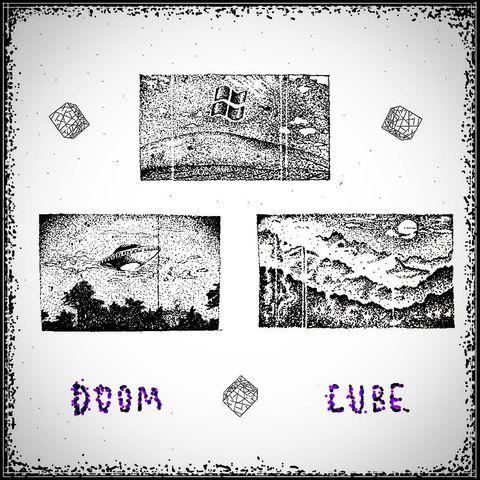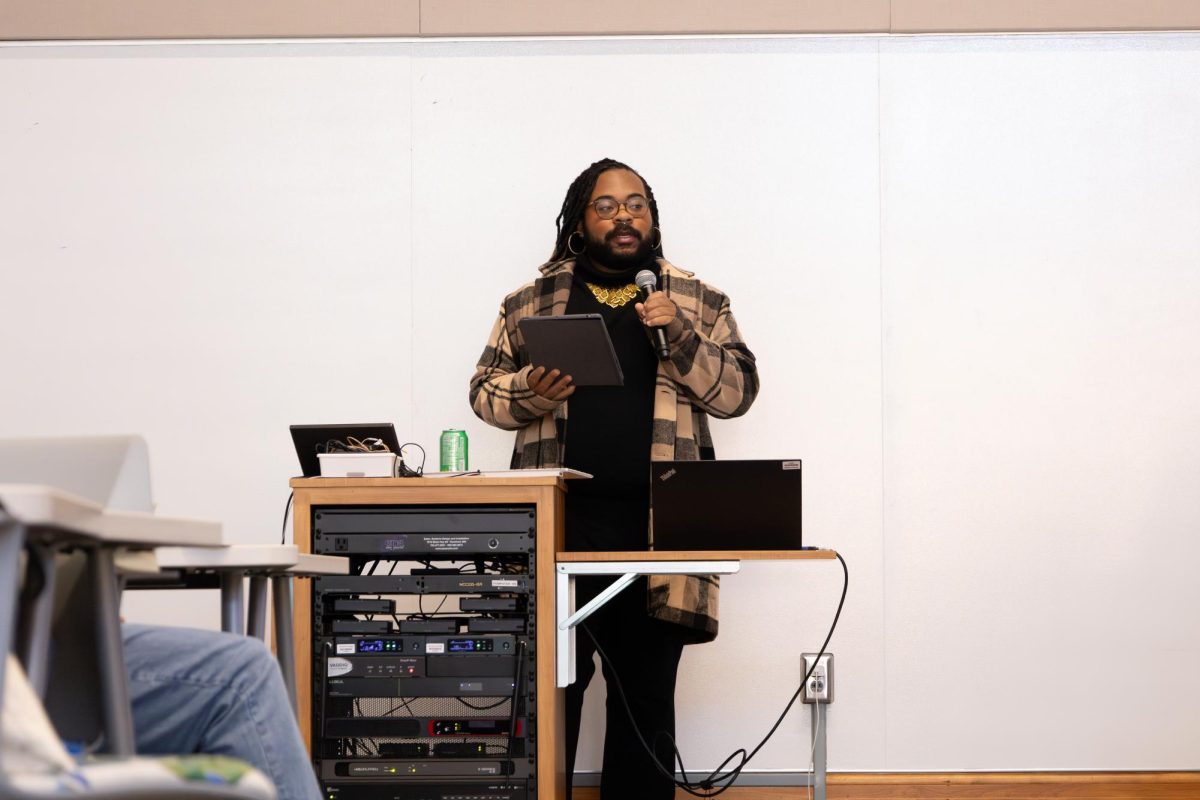Tattoos are becoming more and more popular with younger generations. This week, the Carletonian’s Tali Emlen sat down with a young tattoo artist to talk about his experiences with the art. He shares his connection to tattoos both by creating them and showing off his own, providing insight into the different ways tattooing can influence how he sees himself. This interview was edited for length and clarity.
How did you first get into tattoos and tattooing?
My first term at Carleton, I ran into an older student who stole a lot of bikes, and he asked if I wanted a tattoo. I said ‘okay.’ I liked watching him figure out the process since that was the third tattoo he’d ever given. He took it very seriously. It took a very long time, too, but we were just chatting. I liked the whole experience. Then, when I moved into my communal house, I wanted to be able to provide that for people. It’s kind of a crazy thing being able to mark yourself for forever. The whole process of getting a tattoo is very exciting.
How do you choose a tattoo?
I feel like I am more loose. I don’t care much about what is on me. I like doing flash, meaning tattoo designs already created by the artist. Looking for things that tattoo artists draw for themselves and that you can just pick for yourself; I find that to be a much easier process. And I like seeing what people draw and having other people’s drawings. Who you get tattooed from matters a lot, too. Whether or not you have positive associations with it. I have met people who have gotten tattoos from people that they later felt had done very bad things, and it made them feel very differently about their own tattoos.
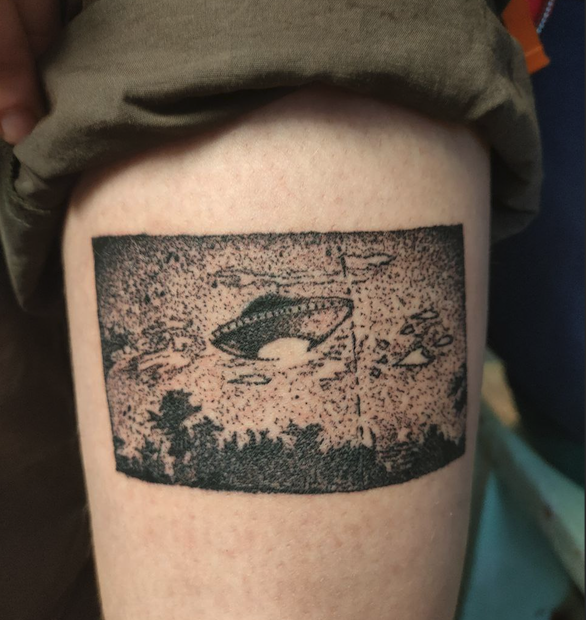
Photo courtesy of artist submission.
What are the steps you take when giving a tattoo?
Drawing; you just draw. Then, you stencil the drawing and do a mirror image. Next, you alcohol the body, shave, transfer the image onto the skin, and start. How long it takes depends on the type of tattoo. For instance, stippling ones take a long time since they are dotted. This fly took a long time, too. I was just going really slow and kind of nervous for some reason. I felt a lot of pressure with the person I was giving it to.
What is the significance of having tattoos for you?
It made me think about my skin very differently afterwards and how I relate to things as part of my physical experience. It makes me feel very accepting. It is training my mind to not be so strict about what goes on my body. Being primed in that mode is good for me but not everybody treats it the same. Some people are very exact about what they want, which I think is fair.
What do you enjoy about giving tattoos?
I really appreciate the craft of it. It’s just a nice interaction to have. It’s kind of calming. It is something that feels a little bit extreme and very controlled. It’s a good feeling to just print a design. That people can trust you with their skin is a very appealing thing to me.
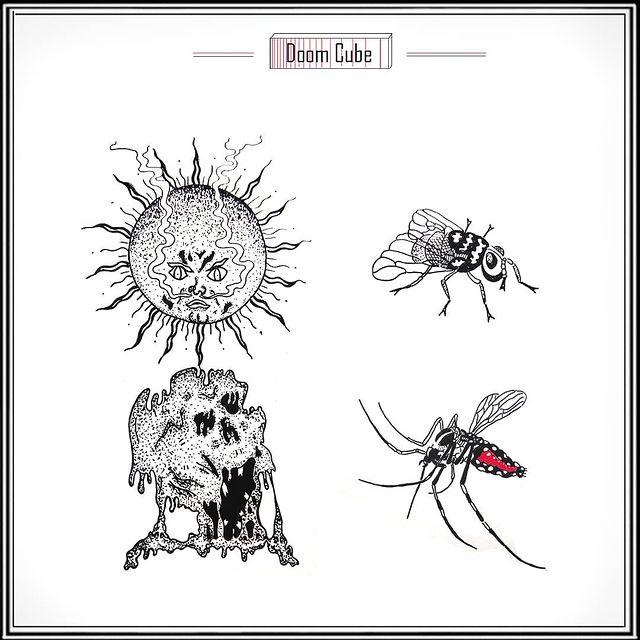
Photo courtesy of artist submission.
Are you always happy with your tattoos?
I have definitely felt unhappy with them sometimes, which is not a great feeling since it is such a permanent mistake. The early people were very generous and accepting.
Have you told anyone you weren’t happy with a tattoo you did?
Yeah, definitely. It was one of my friends. One of the first machine tattoos I did was on her back, and it was pretty big. I kind of scarred up her skin, and I felt bad. If another tattoo artist saw it, they’d be like, ‘What the heck?’ She really likes it though. But I think you shouldn’t do that—tell someone you feel badly about something.
Do you keep in touch with the strangers you tattoo?
No, I don’t. I really like thinking about how people are just everywhere with [my tattoos] forever.
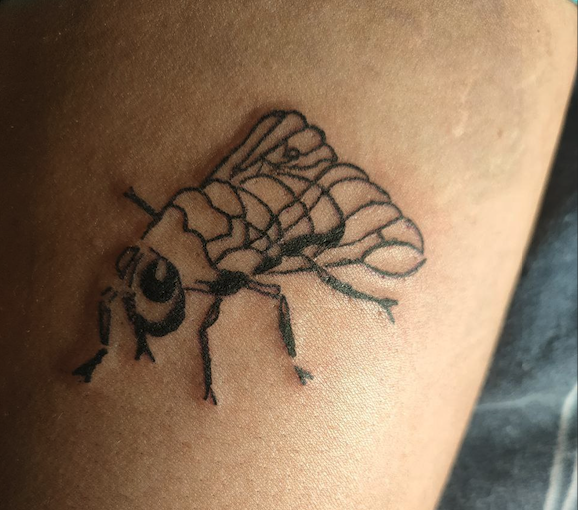
Photo courtesy of artist submission.
Do you think that your style will change over time?
I think so. I think I will get better at drawing. With tattooing, it feels like there is a linear progression. The more you do it, the better you will get. It feels like I have very steadily gotten better each time I tattoo. I am trying to branch out since I think the style I have now is kinda specific. I’d like to do stuff with gray since what I have now is two-toned. I want to do more smooth shading. I might try color.
I know you have a lot of experience tattooing here and in Taiwan; are there any differences you notice?
Tattoos have a big mafia association in Taiwan. All the tattoo artists I’ve talked to in Taiwan have said that they have tattooed mafia people. But they’re just kind of around in Taiwan; they’re not dangerous or anything. Mafia members tend to have particular types of tattoos like traditional Chinese imagery, kind of elaborate things. It’s also very easy to start tattooing there. Here, you need a license, and you need to have performed something like 200 supervised tattoos. In Taiwan, you don’t need a license at all. Tattoos were also banned in parts of the U.S. for a long time.
Do you want to be a tattoo artist forever?
My life’s goal is not to tattoo forever but for some time. I would like to meet people through this. I think it is easy to have a lot of autonomy in tattooing, more so than in other art forms. I like the life that people can lead with it.










